We had a feeling we might be rushing things when we set out on one of our planned Lady’s Slipper hikes this morning. But this was one nature moment my guy was actually looking forward to–oh, he loves to hike, it’s just the stopping for hours on end to look at all the idiosyncrasies of a flower or insect that doesn’t appeal to him.
And so it was that not long after we left the trailhead, we met the first lady of our intentions. She was classic–her pink slipper-like pouch inflated and darkly veined (in a manner that reminded me of a pitcher plant’s veins), her sepals and upper petals purply-bronze, stem hairy, and the set of basal leaves well ribbed. With that, we got excited, announced her as number one, and couldn’t wait to continue the count.
As luck would have it, by the time we reached the beaver dam crossing, we’d seen only four.
But at the dam we did pause, at which point several large tadpoles disappeared and a frog jumped into the muck to hide from us. Do you see him? By his dark angular spots, rather than dark rounded spots surrounded by a light ring did I know his name to be Pickerel.
Once the trail began to actually ascend the mountain, we continued to search left and right–and in the process discovered Indian Cucumber-root suddenly in flower. This is one of my favorites, perhaps because of the unique and quite subtle flower that nods below the upper leaf whorl. Except for once that I know of, typically Indian Cucumber root needs a second tier of leaves to help supply more energy so it can flower and fruit. One might easily pass by these plants, but they’re worth a stop to notice the six recurved, yellowish-green tepals (petal-like parts), six stamens, and those three stunning dark red styles.
Still no more lady’s to delight us, but flower clusters of Clintonia added bright cheer beside the trail. And actually, when not in flower, it’s quite easy to confuse their leaves with that of Lady’s Slippers. While both are basal, green, and oval in shape, Clintonias have several smooth leaves featuring a central vein and you can easily fold them in half, while Lady’s Slipper leaves of two are deeply pleated.
As we climbed higher, we spotted more and more Painted Trillium, the flower appearing above its three leaves. The flower has three green sepals and six pink-tipped stamens. Two of the features I love about these flowers: its wavy-edged petals; and the inverted pink V at the base of each. And I’m proud of my guy because he can name a trillium and seems to find pleasure in pointing them out to me. Of course, then he moves on, while I stop to honor the plants with a photograph. Every time 😉
My heart cheered at the sight of this little one, a Bunchberry. While the plant seems to sport a single flower, it’s “flower” is a series of four large petal-like bracts, surrounding the actual flowers, which are tiny and greenish, with four minute petals. Like the Indian Cucumber-root, this plant needs more leaves when it’s ready to flower, so instead of the usual leaves of four, flowering Bunchberries have two extra large leaves to help the cause.
It wasn’t just flowers that were worth noticing for upon a tree leaf that was being consumed after only recently breaking bud, two May Beetles, quite possibly Dichelonyx elongatula, prepared to canoodle.
As we approached the top, where the naturally community transitioned, so did the insects. Here and there fluttered several Eastern Tiger Swallowtails. I’m never quite certain of my ID for these versus Canadian Tiger Swallowtails, but the latter has a solid yellow band on the trailing edge of the forewings and the yellow is broken by black for Eastern. Also, on the hind wings, if I’m correct, the blue on the Eastern is outlined in black arcs or curves, while the black line is straight for a Canadian Tiger.
And what to its dining delight should be offering nectar on this fine day–Rhodora.
A Hummingbird Clearwing Moth was equally pleased with the menu.
So what about the ladies of our quest. It was in this new community that we found the most. And not all were completely opened, which made us wonder if we’d jumped the gun and headed off on our search a week too early.
We had to look under trees and shrubs, and though we didn’t find as many as we’d anticipated, we were still pleased.
Our favorite was this cluster, which my guy was proud to discover.
By the time we reached lunch rock where our PB&J sandwiches were consumed as we took in the view, the final orchid count totaled 47. We may just have to return for another Mondate in a few weeks because we suspect there will be more in bloom.

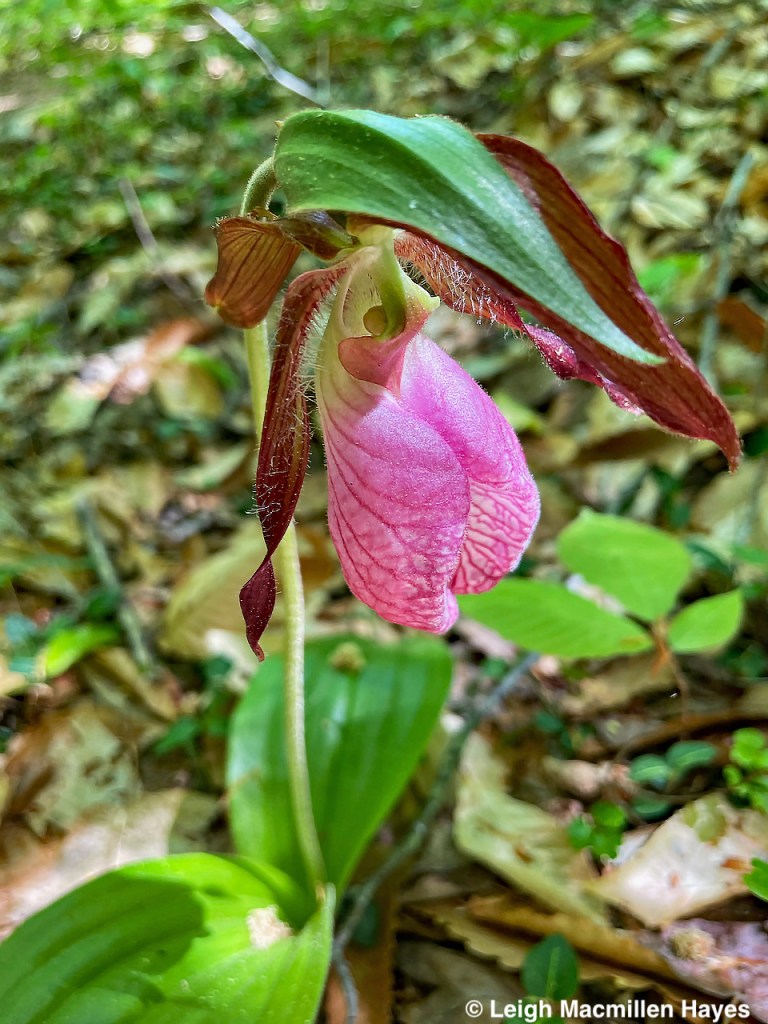

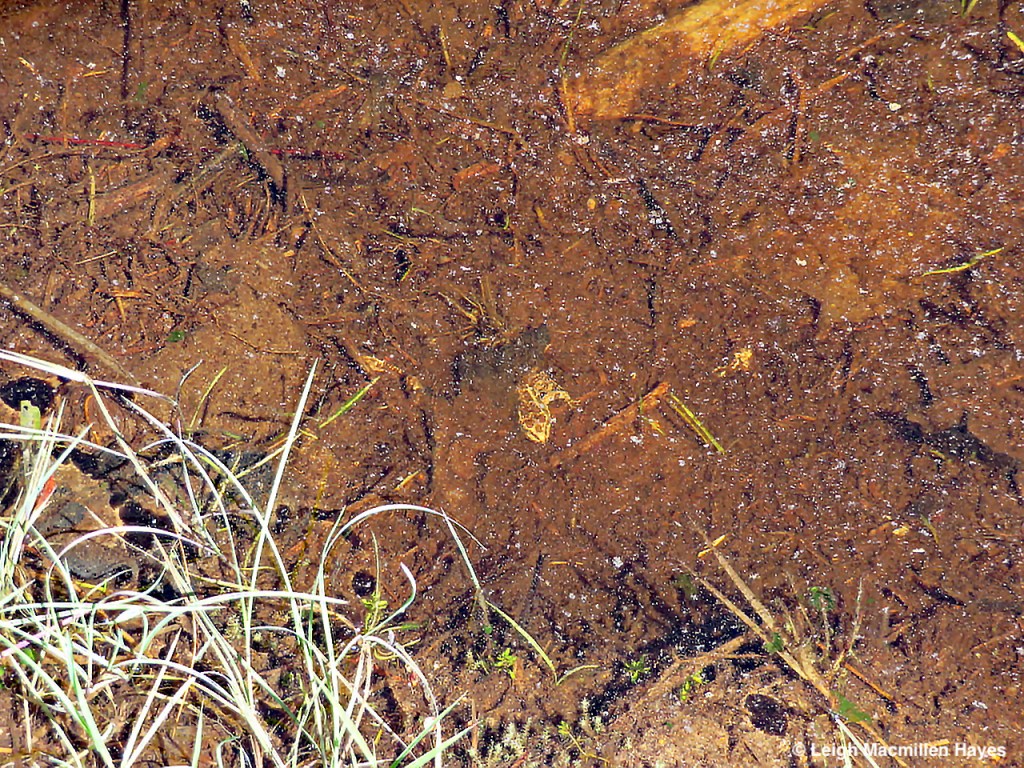

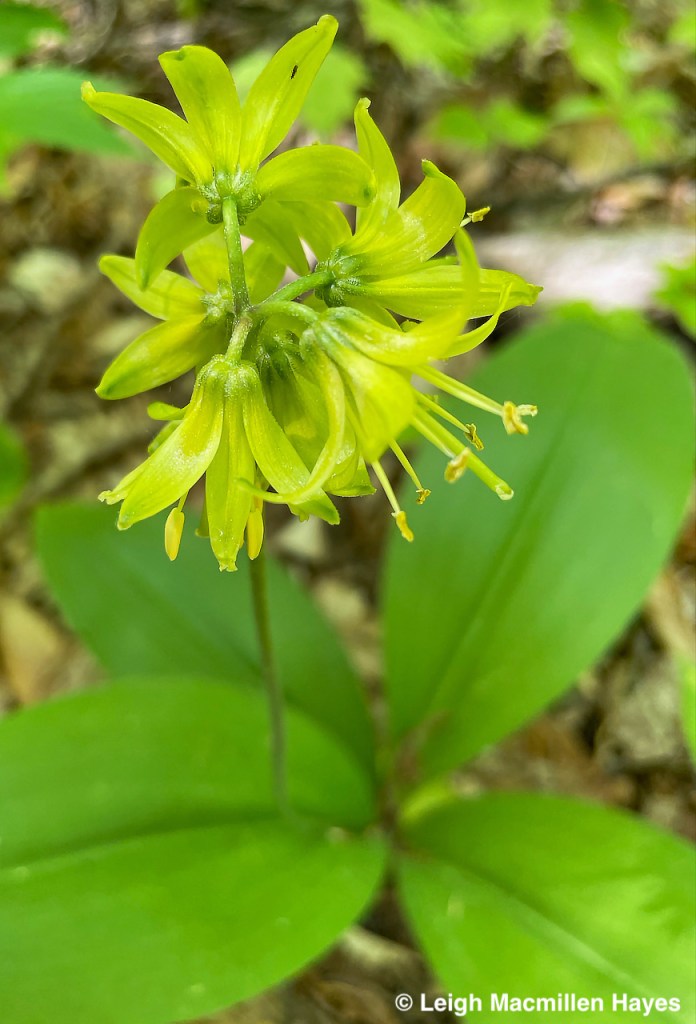

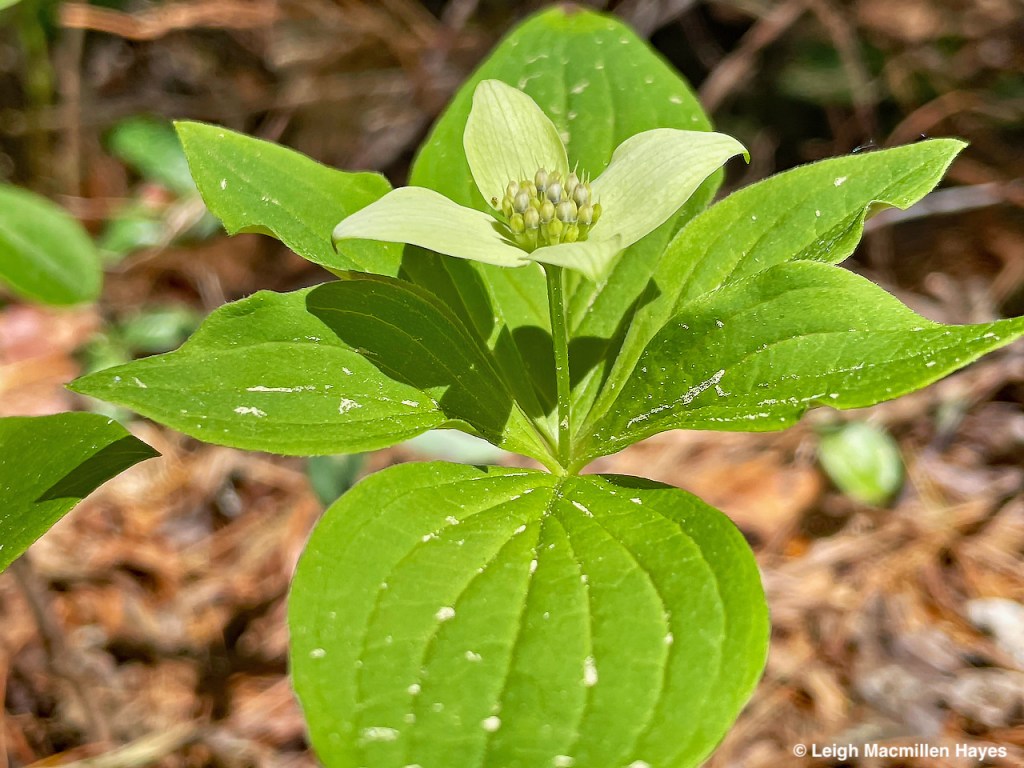

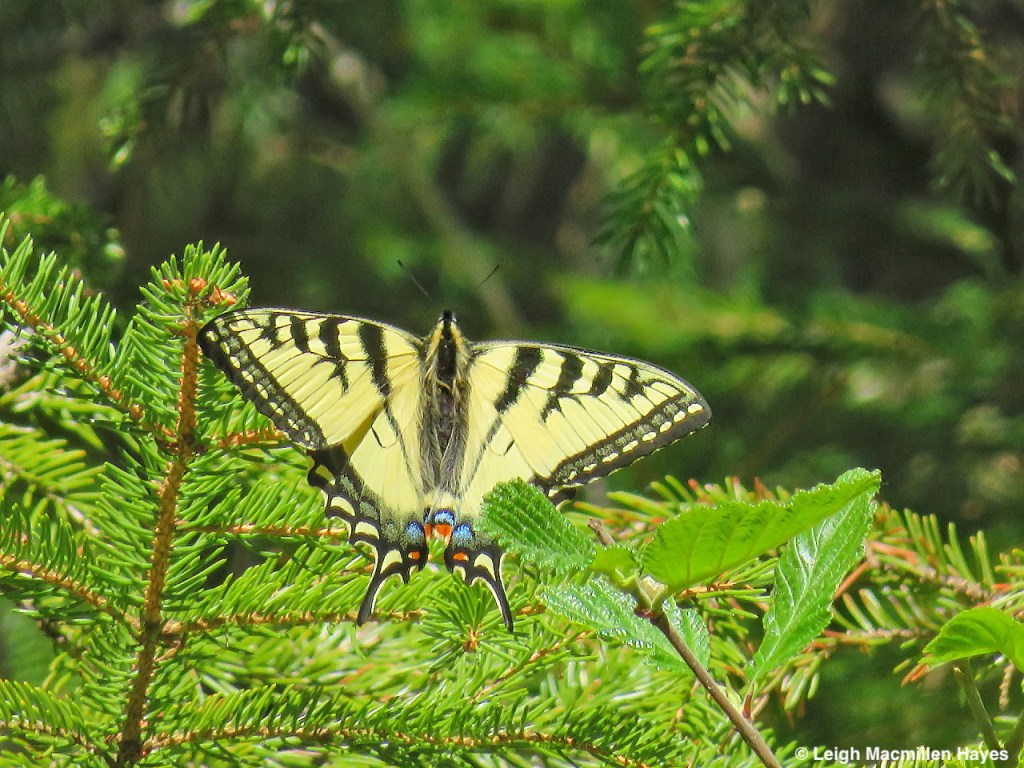






Wow!!!!
LikeLike
Indeed!! xoxo
LikeLike
Beautiful photos – especially love those butterflies!
LikeLike
I know–crazy beautiful.
Thanks.
LikeLike